It’s all over the news but it’s not really new news. Women aren’t getting paid as much as men for doing the same jobs.
Even the United States Women’s National Soccer Team is getting cheated. Its players get paid dramatically less than players on the men’s team, despite bringing home four World Cups to the men’s (ahem!) zero. Add to that new information from The Wall Street Journal showing that the women’s soccer games brought in more profit over the past three years than the men’s games, and you have a strong case.
But this isn’t a problem that exists only in sports. Far from it. U.S. Sen. Kamala Harris (D-CA) has announced that she’s proposing an “Equal Pay Certification” plan to address widespread inequality.
Gender pay inequality has a long history, but, overall, it has gotten a lot better, right? Not that much. According to equalpaytoday.org, women today make 80 cents for every dollar a man earns for doing the same work.
Let’s take a look at some of the significant moments in the history of gender pay inequality so we can just how far we’ve come. Hold on, it’s a bumpy ride.
1869 — The First Complaint
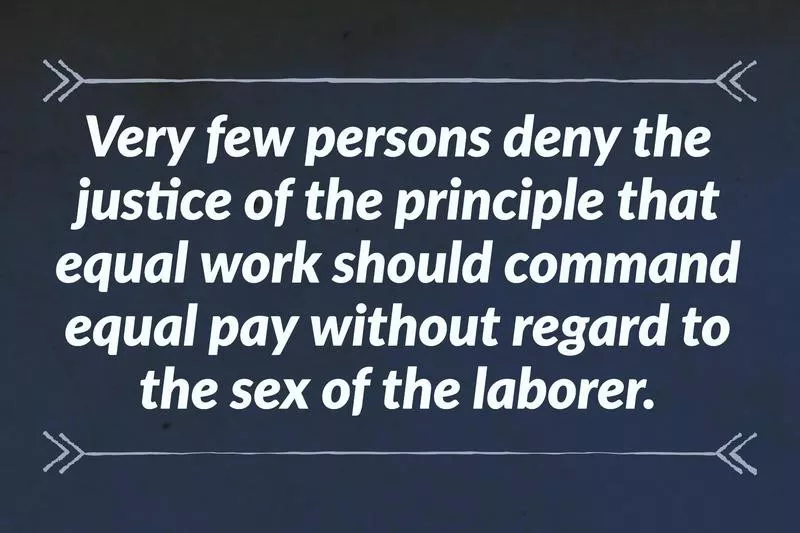
The first known public complaint about pay differences between men and women came in the form of a letter to the editor of the New York Times all the way back in 1869. The letter states, “Very few persons deny the justice of the principle that equal work should command equal pay without regard to the sex of the laborer, but it is one thing to acknowledge the right of a principle and quite another to practice it.”
The author went on to mention the women working in the U.S. Treasury Department. “Many of these women are now performing the same grade of work at $900 per annum for which men receive $1800. Most of them, too, have families to support; being nearly all either widow or orphans made by the war.”
1883 — A Strike for Equal Pay
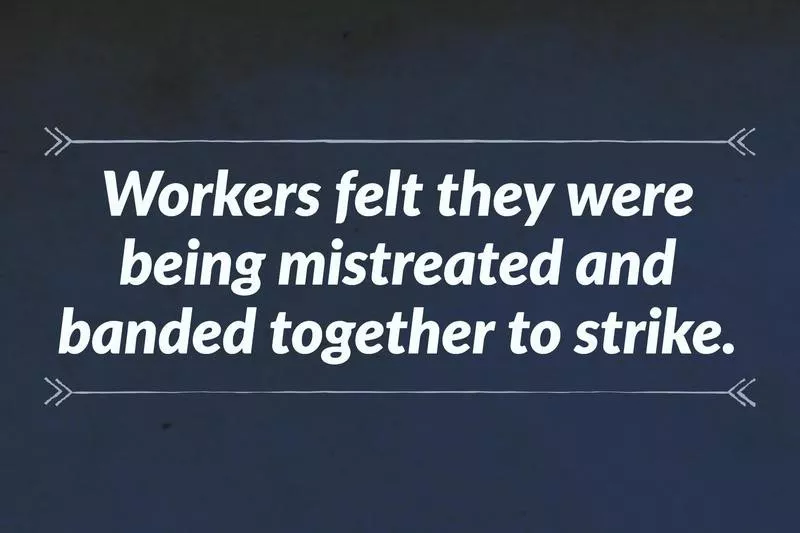
In 1883, workers at the Western Union Telegraph company went on strike. The new technology of the telegraph created a lot of jobs. Not only that, it was an occupation that was open to women.
But, by 1883, workers felt they were being mistreated and banded together to strike. While there were a number of grievances, among the telegraph operators demands was equal pay for women telegraph operators.
Unfortunately, the strike failed and the telegraph operators did not see any of their demands met.
1911 — A NYC Mayor Keeps His Promise

In the late 1800s, the situation for teachers in New York City was unfortunate. In 1900, a bill passed that created a uniform pay schedule for teachers in the city.
According to the New York City Department of Records, the annual salary for a female teacher was $600. A male teacher would take home a salary of $900. That’s only 67 percent of the larger salary.
They didn’t stop there. Annual raises for women were set at $48 for women and $105 annually. So, after 5 years, a female teacher would earn $792 per year while a man would take home $1320. That 67 percent faded to a flat 60 percent.
In 1910, the Democratic candidate for mayor promised equal pay for teachers. He won the race and in 1911 he stayed true to his word and passed an equal pay bill. However, it only applied to teachers hired in 1912 or later.
1942 — WWII and a Polite Suggestion
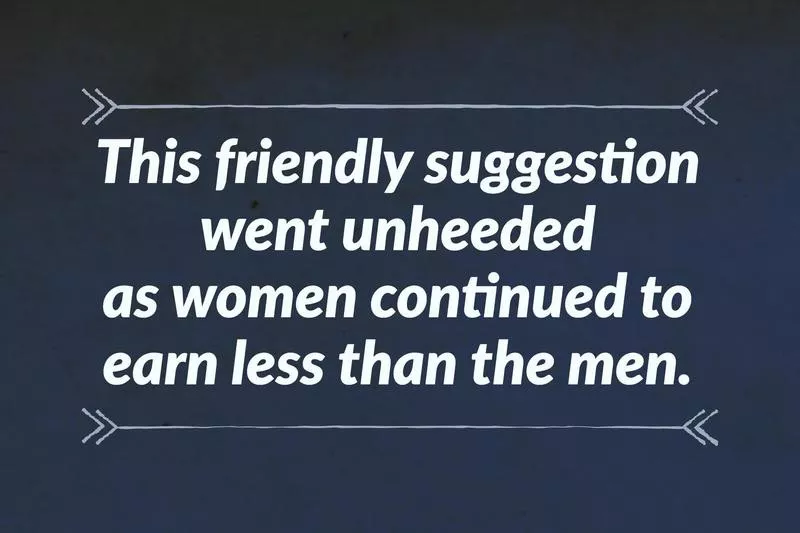
You probably know how women stepped up to fill empty positions throughout the country as American men went to fight in World War II. They were, of course, not paid as well as their male counterparts.
In 1942 Franklin D. Roosevelt created the National War Labor Board. This board wanted to keep factories working so the supply chain would not get interrupted during the war. To help keep workers happy, it suggested that employers voluntarily pay female workers on an equal scale to male workers.
This friendly suggestion went unheeded as women continued to earn less than the men.
1945 — The First Equal Pay Act. Progress…Almost
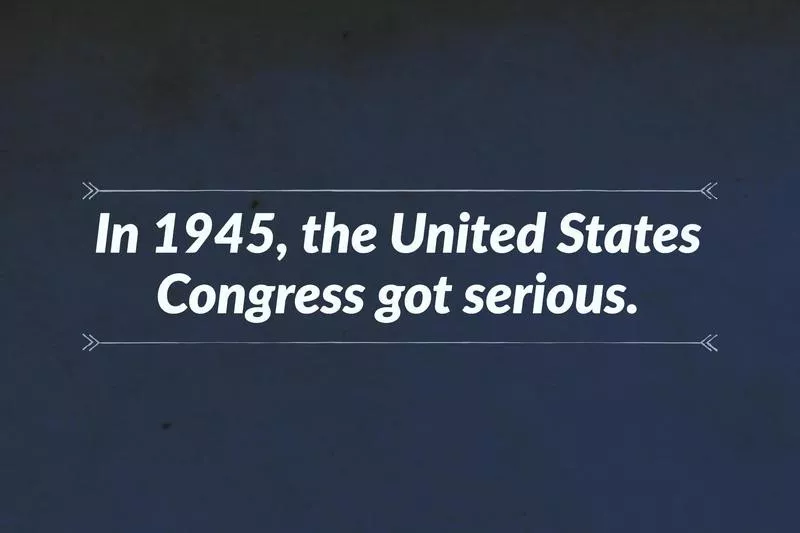
In 1945, the United States Congress got serious. It introduced the Women’s Equal Pay Act. This bill would make it illegal to pay women less than men for comparable work.
Great, right? This is the type of aggressive legislation that can make a difference.
The bill failed to pass so the status quo remained. So close.
1963 — JFK and the Second Equal Pay Act
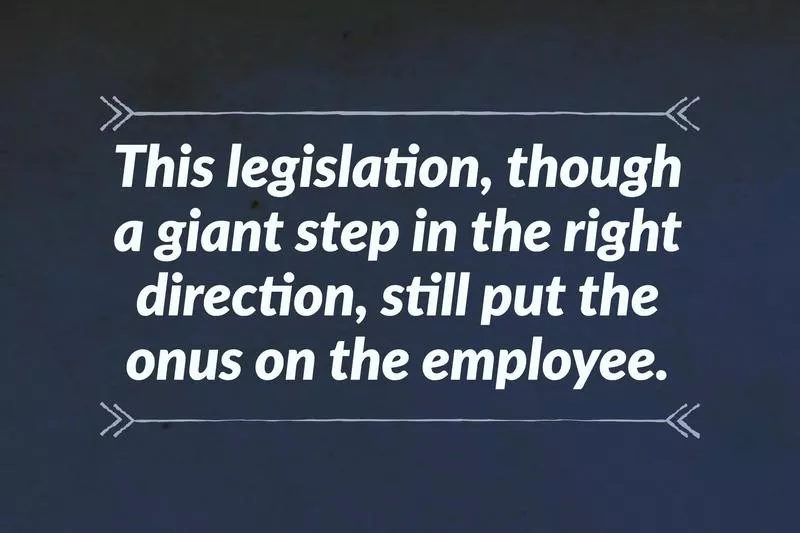
By the 1960s, the issue was really picking up steam. In 1963, during the presidency of John F. Kennedy, Congress passed the Equal Pay Act.
This was an amendment to the Fair Labor Standards Act of 1938 and, according to History.com, made it mandatory for employers to “equal skill, effort, and responsibility, and which are performed under similar working conditions.”
This legislation, though a giant step in the right direction, still put the onus on the employee to report or sue their employer if they believed they were being paid unfairly. This is the legislation that the USWNT is citing for its lawsuit against U.S. Soccer.
The 1970s — Trying to Sort it All Out
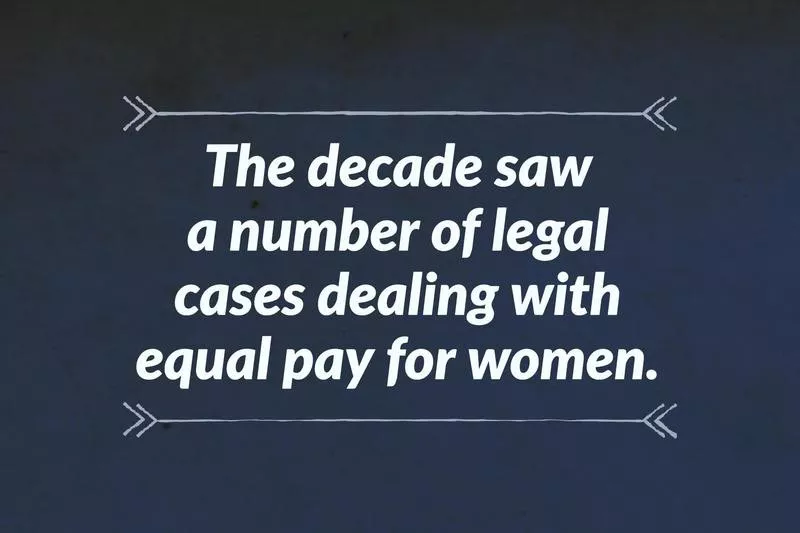
The 1970s saw a number of legal cases dealing with equal pay for women.
In 1970, the case of Schultz v. Wheaton Glass Co. broadened the scope of equal pay for equal work to mean “substantially equal.” This meant that companies couldn’t justify paying men more just by giving them different titles or insignificant tasks to differentiate them.
The 1974 case of Corning Glass Works v. Brennan again reinforced the Equal Pay Act as it forced Corning to pay its day shift inspectors, who were women, the same wages as the male night shift inspectors.
The Pregnancy Discrimination Act of 1978 scored another victory for women as it decreed that pregnant women must be treated like all other employees or applicants.
All in all, it was a decade of progress.
April 6, 1996 — The First Equal Payday
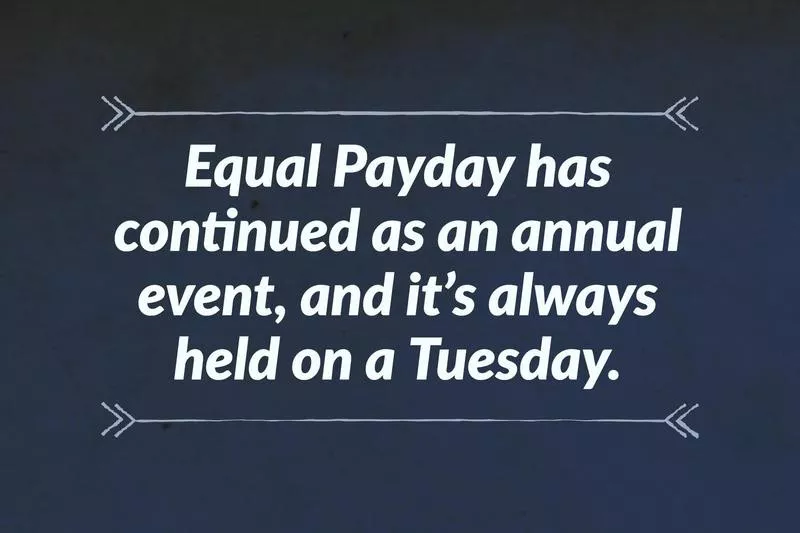
In 1996, the National Committee on Pay Equity decided it needed a way to bring the gender pay gap into the public eye.
So they came up with Equal Payday. This day represents the extra time a woman would have to work into the new year to earn the money a man in her position would have earned the previous year. The holiday is always held on a Tuesday.
Equal Payday has continued as an annual event. The next one will be observed on March 31, 2020.
2009 — The Lilly Ledbetter Fair Pay Act

Lilly Ledbetter was an employee at Goodyear Tire and Rubber Company who filed a claim that she was a victim of sexual discrimination. More specifically, that she was not being paid what her male counterparts were earning.
Her first lawsuit failed because she had not filed her claim within 180 days of the start of the issue. In fact, it took her years to gather the courage to speak up.
In 2009, President Barack Obama signed the Lilly Ledbetter Fair Pay Act, nullifying that court’s decision. The LLFPA now asserts that a person has 180 days from the most recent offense (in this case, paycheck) to file a complaint.
2019 — Better, but Still Not Okay
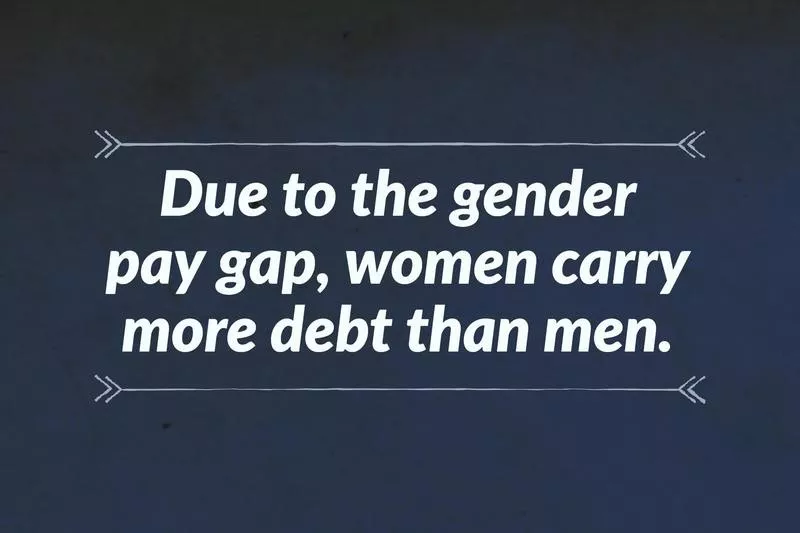
Today’s women in the workplace don’t see the pay disparity that was prevalent a century ago, but there is still a lot of room for improvement.
According to the American Association of University Women (AAUW), women are less likely to negotiate higher pay for themselves than men.
Some states are making it illegal for companies who are hiring to ask applicants about their previous income. Why? If they find out the applicant made less than what the open job could pay, they may offer a smaller amount. This practice leads to the continuation of gender pay disparity.
The AAUW also notes that due to the gender pay gap, women carry more debt than men. Makes sense, right? If you earn less money, you have less disposable income to pay off those student loans.
Gender Pay Inequality Is Even Worse for Minorities
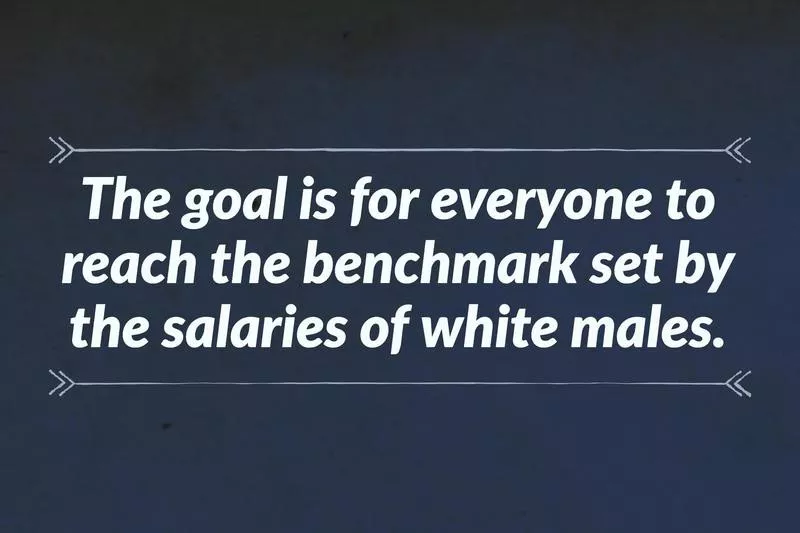
The gender pay gap isn’t just a women versus men issue, unfortunately. It’s a women versus white men issue. While there is a gap between women and men of each category, the goal is for everyone to reach the benchmark set by the salaries of white males.
Here are some stats for earnings numbers when compared to white men.
- Black women – 65.3 percent
- Hispanic women – 61.6 percent
- White women – 81.5 percent
Asian women come out at 93.5 percent of white men’s earnings.
The Cost of Being a Mother
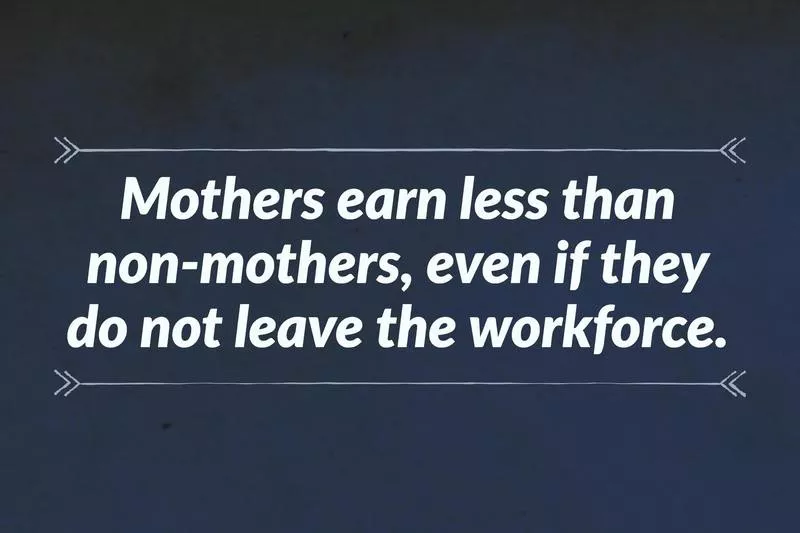
Another finding of the AAUW is that mothers earn less than non-mothers, even if they do not leave the workforce. The same is not true for dads.
To make things worse, moms are less likely to get hired than non-mothers.
Yvonne Marsh, a Certified Financial Planner at Marsh Wealth Management in Knoxville, Tennessee, believes this is a key factor in the continuation of the gender pay gap.
“For those who decided to step off the career path for a period of time, when they get back, they’re behind. It can forever affect your career path,” she said. “If you don’t take that path and stay in the workforce, when your child is sick, need to go to the doctor, we know that it pulls time away from your career. You may not have the time it takes to put in the time to get that next promotion. If a woman gets a college education, gets married, and wants to have children, there is a very real decision there.”
Give Dads a Break
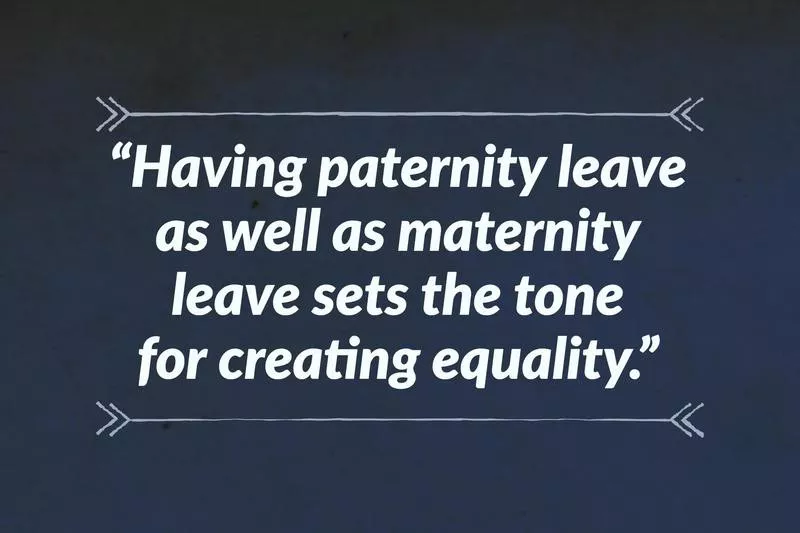
Marsh sees a couple of ways that companies can help neutralize some of the career issues caused by motherhood. The first step, she says, is to provide paternity leave for new fathers.
“Having paternity leave as well as maternity leave sets the tone for creating equality in gender roles,” she said.
The next step is subsidized childcare. She adds: “That’s what can decide the women’s choice to stay home. Having access to subsidized health care can help women stay on their career path without having to step off.”
The ‘Equal Pay Certification Plan’
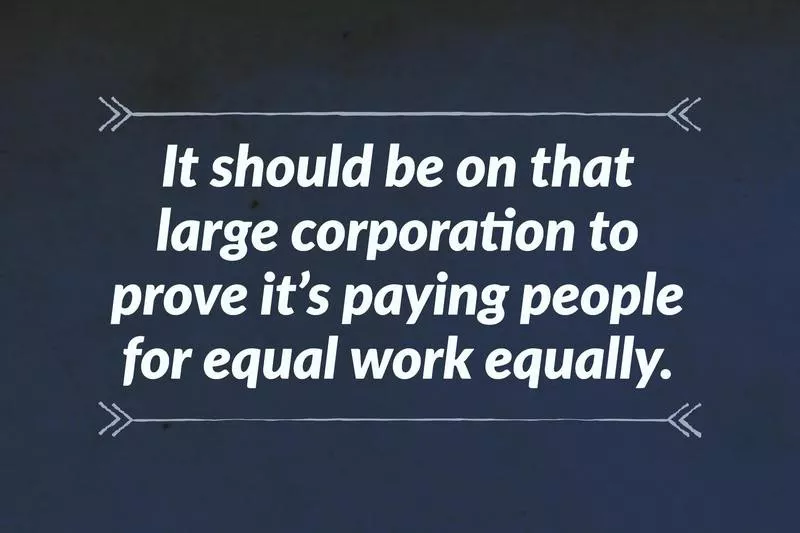
Senator Harris’ plan is fairly straightforward. Businesses can either get “Equal Pay Certified” or they’ll pay a penalty.
For businesses with 100 or more employees, they’d have three years to get Equal Pay Certification from the Equal Employment Opportunity Commission. Companies with 500 or more would only have two years.
These companies would have to show that they are free from any gender-based pay inequalities or prove that there are other factors such as job duties or hazards that factor in. Those companies who fail to get Equal Pay Certification would pay a 1 percent fine on their profits for every 1 percent of the pay gap between the genders.
Harris told CNN, “What I am proposing is we shift the burden: It should not be on that working woman to prove it, it should instead be on that large corporation to prove they’re paying people for equal work equally.”
If the plan goes through, it would certainly be the most aggressive move to combat the gender pay gap. Will it work? We may find out very soon.